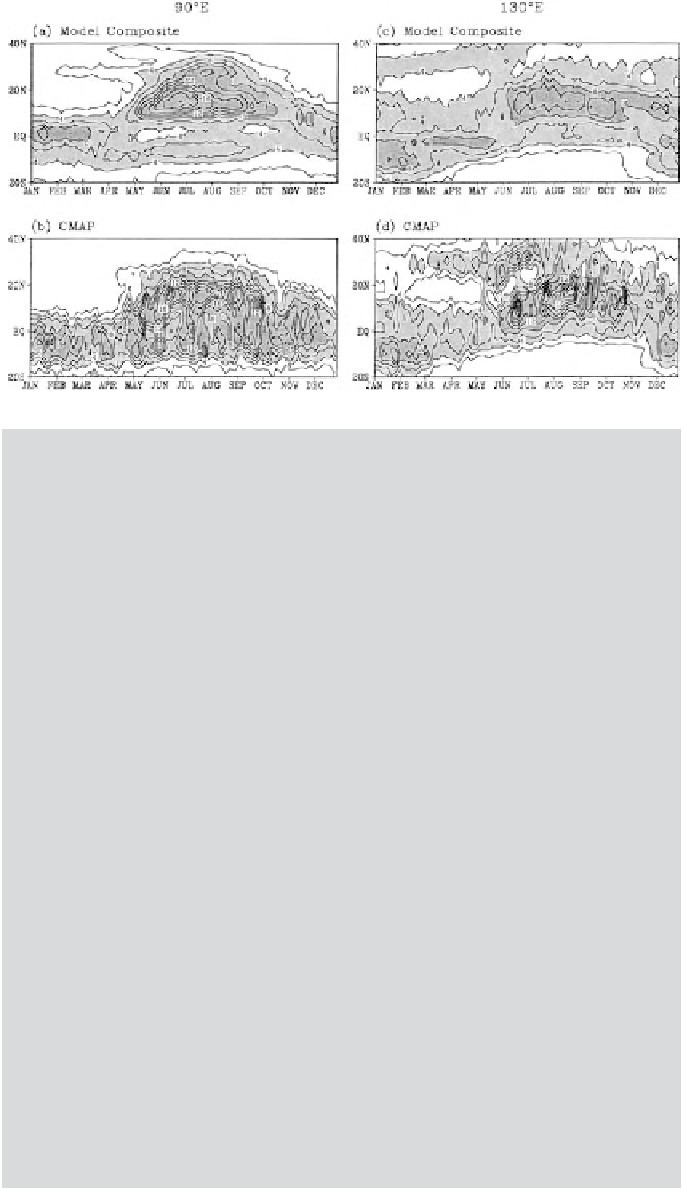Geoscience Reference
In-Depth Information
Figure 9.11 Time-latitude
cross section of climatological
pentad-mean precipitation.
(a) and (b) are for the model
composite and the CMAP
observations along the
longitude of 90
8
E. (c) and
(d) are for longitude
130
8
E. (Adapted from Kang
et al.
2001
)
internal atmospheric dynamics but strongly modified by sea surface tempera-
ture and land surface processes. It is responsible for the modulation of monsoon
onsets, breaks, and evolution regionally. Intraseasonal variability, especially at
the lower frequency end of the spectrum, can have strong impacts on the
seasonal mean monsoon climate. Over different regions, it can either
strengthen or weaken the direct influence by ENSO on the AM. It has been
suggested that the near normal monsoon rainfall over India during the strong
El Ni˜o of 1997-8 may be due to the effects of pronounced intraseasonal
variability, which brought copious rainfall to many parts of India, in spite of the
tendency of ENSO to weaken the AM (see discussion in
previous section
)
.
Modeling intraseasonal variability of the AM is a very challenging problem.
Models generally fail to capture the phase locking between intraseasonal
variability and the seasonal cycle. For example, at the longitude of the Bay
of Bengal (Figure
9.11
), the ensemble mean of MMIP models depicts an over-
simplified picture of the monsoon evolution with a sudden onset of the South
Asia monsoon near the middle of May and beginning of June. However, the
models fail to reproduce the complex intraseasonal structure associated with
the evolution of the monsoon rainbelt as observed. During JJA, the models
show a much more quiescent atmosphere over the oceanic regions near the
equator compared to the observed. Similarly, at 1308 E, the models seem to
capture the broad seasonal evolution, but they fail to capture the climatological
intraseasonal variability during JJA, which is very prominent in the observa-
tion. In particular, the models fail to reproduce the development of the mon-
soon rainbelt associated with the Mei-yu front from 208Nto408 N. The Mei-yu
front is the major climate feature that dominates the climate of continental East
Asia, Korea and Japan. The absence of such features in the coarse resolution
climate models is an endemic problem in almost all AGCMs (Lau et al.

Search WWH ::

Custom Search